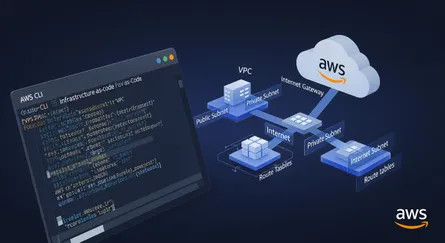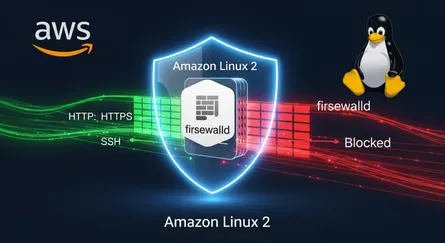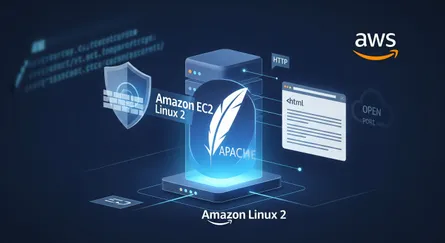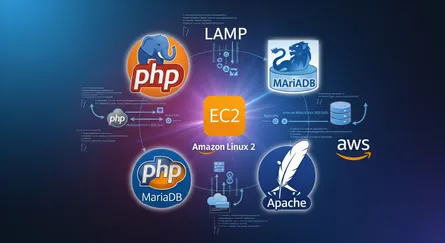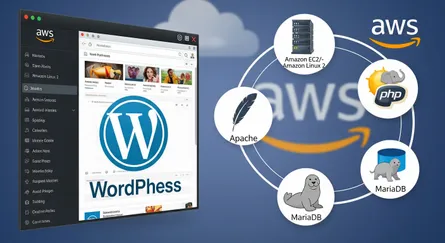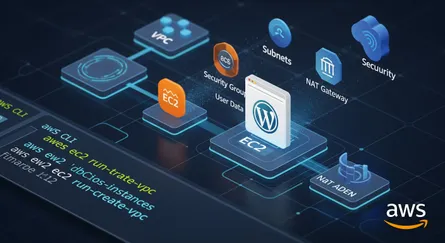Introduction:
In the realm of infrastructure orchestration, Terraform emerges as a versatile sorcerer’s apprentice, allowing you to create and manage your infrastructure across multiple cloud providers. With Terraform, you can wave your magical wand and provision resources on AWS by writing infrastructure configurations in a declarative language. Join us on a journey through the enchanting world of Terraform and witness the power of infrastructure provisioning magic.
The Magic of Terraform
Infrastructure as Code
Terraform embraces the concept of Infrastructure as Code (IaC), enabling you to define and manage your infrastructure using code. By codifying your infrastructure configurations, you gain reproducibility, scalability, and version control.
Declarative Language
Terraform uses a declarative language called HashiCorp Configuration Language (HCL). This language allows you to express your desired infrastructure state without specifying the detailed steps for achieving it, allowing Terraform to work its magic and orchestrate the provisioning process.
Terraform in Action
Resource Providers
Terraform supports various resource providers, including AWS, Azure, Google Cloud, and many more. With the AWS provider, you can weave your spells and provision AWS resources such as EC2 instances, S3 buckets, and VPCs.
Infrastructure Configuration
Terraform uses configuration files called “Terraform files” to define your infrastructure. In these files, you specify the resources you want to create, their properties, and any dependencies between them. Terraform analyzes these files to determine the order of resource creation and ensure proper provisioning.
Execution Plans
Before applying changes, Terraform generates an execution plan that outlines the actions it will take to achieve the desired infrastructure state. This plan helps you preview the changes and ensures that you have full control over the provisioning process.
Infrastructure Provisioning with Spells
Init and Apply
To work its magic, Terraform requires an initialization step to download the necessary provider plugins and set up the execution environment. Once initialized, you can cast your spell by running the “terraform apply” command, which provisions the defined infrastructure resources.
State Management
Terraform maintains a state file that keeps track of the current state of your infrastructure. This file allows Terraform to understand the differences between the desired state and the actual state, making it capable of making the necessary changes to achieve the desired state.
Spells of Efficiency and Collaboration
Infrastructure Modules
Terraform allows you to create reusable modules, which are self-contained configurations that encapsulate a set of resources and their dependencies. These modules promote code reusability, consistency, and efficiency in managing your infrastructure.
Version Control and Collaboration
By treating Terraform configurations as code, you can store them in version control systems, enabling collaboration among team members and providing a history of changes. This approach ensures proper code management, easy rollbacks, and seamless collaboration.
Extending with Providers and Modules
Terraform’s extensibility allows you to incorporate additional providers and modules to extend its capabilities. This flexibility empowers you to integrate with different cloud providers and leverage community-created modules for common infrastructure patterns.
Best Practices for Terraform
Infrastructure as Code Principles
Apply best practices of Infrastructure as Code, such as using version control, documenting changes, and implementing code reviews, to ensure the reliability and maintainability of your Terraform configurations.
Terraform Workspaces
Utilize Terraform workspaces to manage different environments and maintain separate state files. Workspaces allow you to deploy and manage infrastructure for development, testing, and production environments with ease.
Terraform Cloud and CI/CD Integration
Consider leveraging Terraform Cloud or integrating Terraform into your CI/CD pipelines to automate the provisioning process, enforce policies, and enable collaboration within your infrastructure provisioning workflows.
Conclusion
Terraform empowers you to wield the power of infrastructure provisioning magic, allowing you to create and manage your infrastructure across multiple cloud providers with ease. By embracing Infrastructure as Code principles and harnessing the declarative nature of Terraform, you can orchestrate your infrastructure effortlessly. Embrace the magic of Terraform and unlock the true potential of infrastructure provisioning.
References
- Terraform by HashiCorp - Official Website.), https://www.terraform.io/
- Terraform Documentation.), https://developer.hashicorp.com/terraform/docs
- Terraform AWS Provider Documentation.), https://registry.terraform.io/providers/hashicorp/aws/latest/docs
- Infrastructure as Code - AWS.), https://aws.amazon.com/devops/infrastructure-as-code/
- HashiCorp Configuration Language (HCL.), https://github.com/hashicorp/hcl
- Terraform Modules - Terraform Documentation.), https://developer.hashicorp.com/terraform/language/modules
- Terraform State Management - Terraform Documentation.), https://developer.hashicorp.com/terraform/language/state
- Terraform Workspaces - Terraform Documentation.), https://developer.hashicorp.com/terraform/language/workspaces
- Terraform Cloud.), https://www.hashicorp.com/products/terraform
- “Terraform: Up & Running: Writing Infrastructure as Code” by Yevgeniy Brikman.), [Link to a reputable source for the book or summary]
- Best Practices for using Terraform - Gruntwork.), https://gruntwork.io/guides/foundations/how-to-use-terraform-effectively/
- “Infrastructure as Code: Managing Servers in the Cloud” by Kief Morris.), [Link to a reputable source for the book or summary]
- Getting Started with Terraform on AWS - AWS Workshop.), https://catalog.workshops.aws/terraform-beginner-to-pro/en-US
- Terraform Registry (for providers and modules.), https://registry.terraform.io/
- “CI/CD for Infrastructure with Terraform and Jenkins/GitLab CI/GitHub Actions” - (Example: Search for tutorials on this topic.), [Link to a relevant tutorial]

